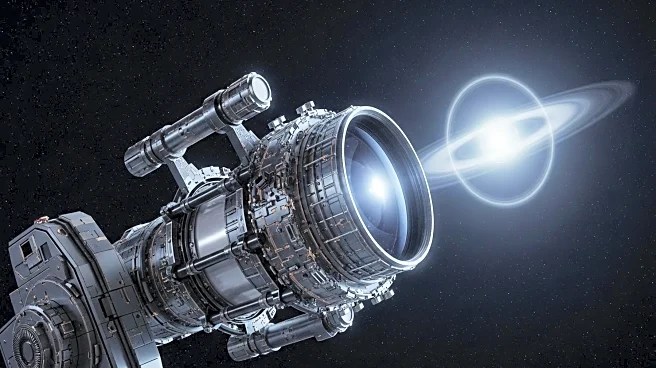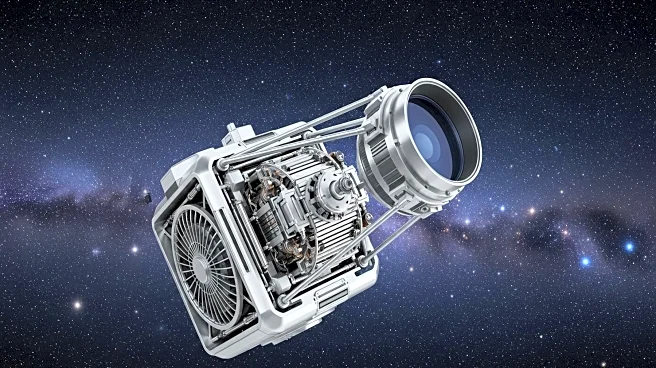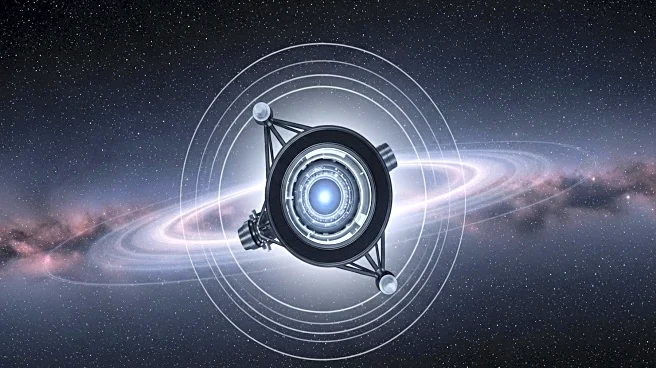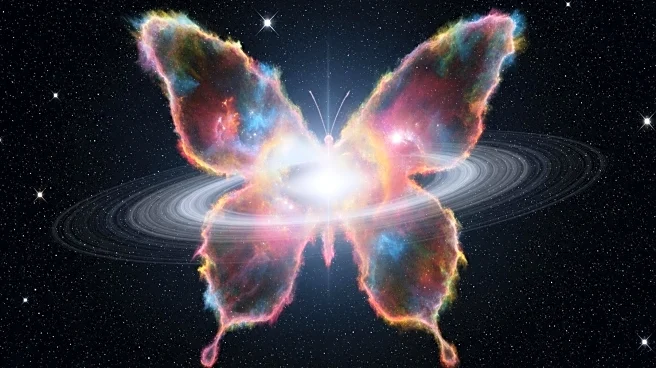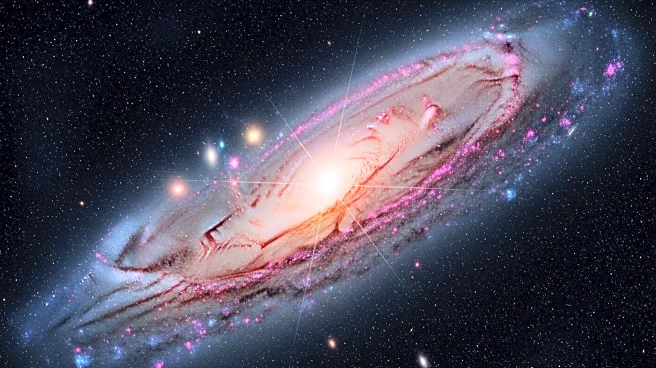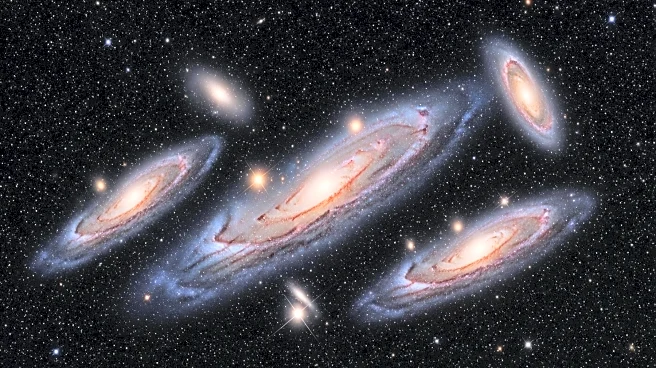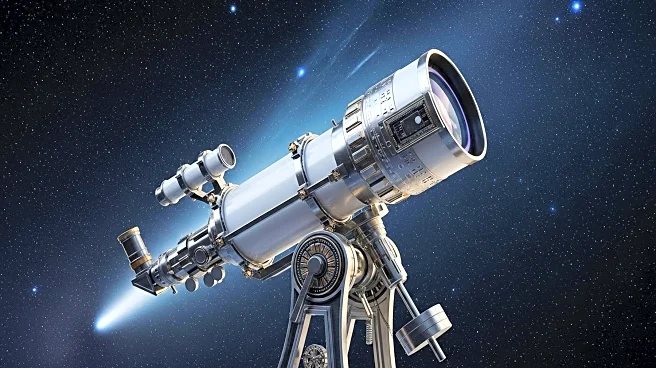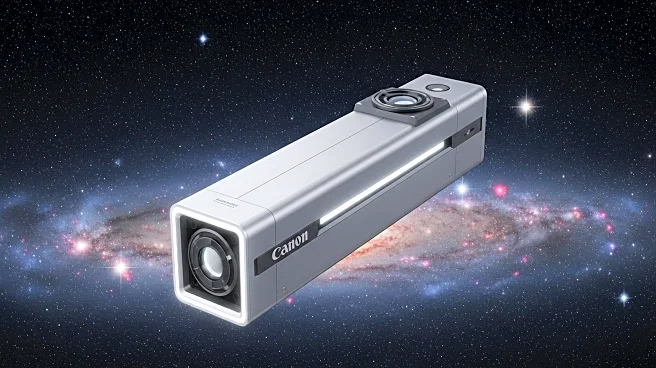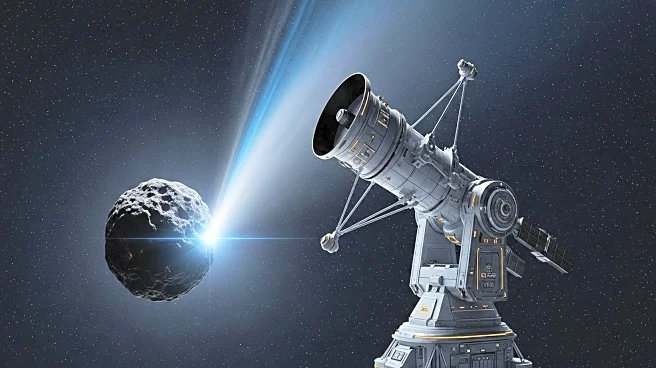What's Happening?
The James Webb Space Telescope has identified a planet-forming disk around a young star in the NGC 6357 region, which is rich in carbon dioxide rather than the expected water. This discovery challenges existing theories of planetary formation, as such disks typically contain water. The star, known as XUE 10, is located 8,000 light-years from Earth, and the findings suggest that ultraviolet radiation or local environmental conditions may have depleted the water reservoir in the disk.
Why It's Important?
This discovery could reshape our understanding of how Earth-like planets form, as it suggests that the conditions in which planets develop may be more varied than previously thought. The presence of carbon dioxide instead of water in the disk could indicate different chemical processes at play, potentially affecting the formation and characteristics of planets in such environments. This research may lead to new models of planetary formation and influence future studies in astronomy.
What's Next?
Further investigation into the star system is planned, with the James Webb Space Telescope continuing to provide detailed observations. Upcoming ground-based observatories, such as the Extremely Large Telescope, will enhance the ability to study these disks and their substructures, potentially revealing more about the formation of planets in irradiated environments.


